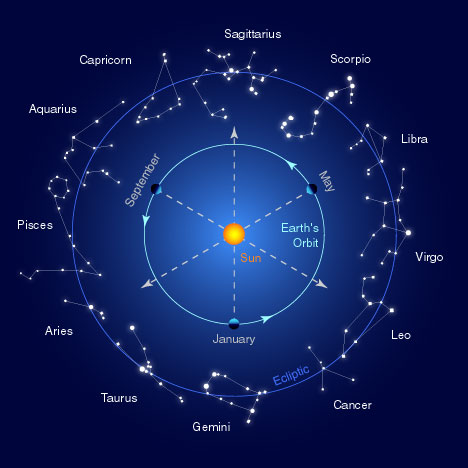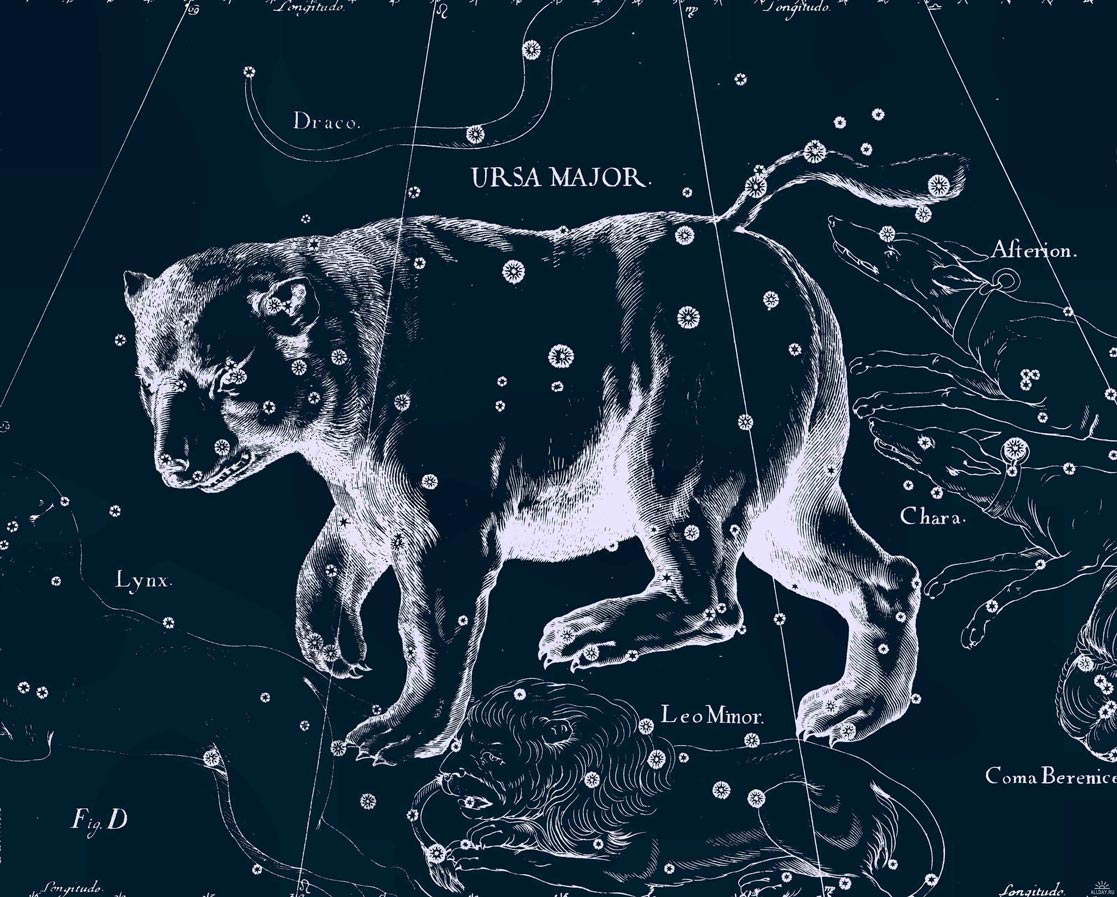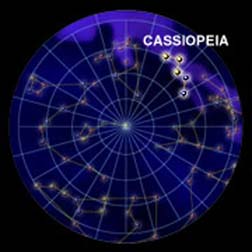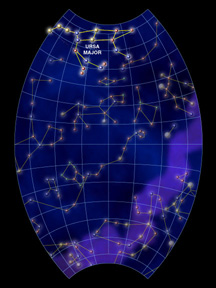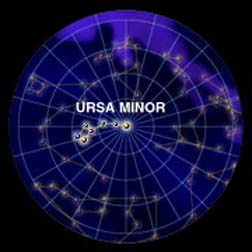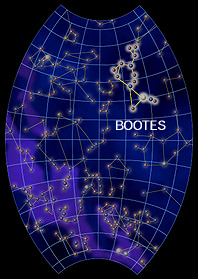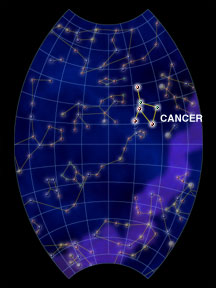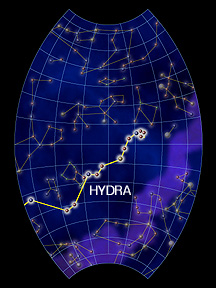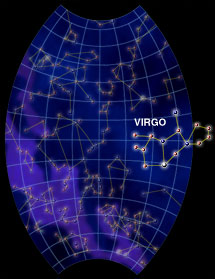
- •Table of contents: Events that have led to English as we know it now 9
- •Word origins___________________________________________________159 Etymological bonus_____________________________________________201 Events which have led to English as we know it now
- •About 3000 b.C., our male ancestors led their women-folk on their great migrations in two directions
- •The Romans in Britain
- •The Romans left the Britains to defend their empire
- •Additional influences on the English language
- •After the Battle of Hastings, in 1066, William the Conqueror imposed Norman rule upon England
- •While the Norman Conquest was directly affecting English speech, events in other regions of the world were also influencing the language
- •In England, there were other influences which resulted in language modifications
- •If you understand the following story, you understand at least one word from thirty-two different languages!
- •The English Language: It's Greek to Me
- •Latin Roots, Prefixes, and Suffixes
- •Word/ Origin of Word
- •Vocabulary List One
- •Vocabulary List Two
- •Vocabulary List Two Practice Sheet
- •Categories
- •Latin Expressions in English
- •It is Everlasting
- •Interesting fact!
- •Facts About Hades - The Greek God of the Dead
- •Zeus - Greek God Zeus
- •It’s only words…
- •Greek Goddess Athena: The Goddess of Wisdom and War
- •Latin and Greek names of some semi-precious & precious stones agate:
- •Amethyst:
- •Garnet:
- •Hematite:
- •Iolite:
- •Jasper:
- •Malachite:
- •Chrisoprase
- •Quartz:
- •Diamond
- •Emerald
- •Anglo-Saxon words in the English language
- •Naked facts and no fun! приставки латинского происхождения
- •Суффиксы латинского происхождения
- •Латинские цифровые основы
- •Латинские названия годовщин
- •Греческие корни и производные от них слова
- •Суффиксы греческого происхождения
- •Варианты написания префиксов
- •Приставки древнеанглийского происхождения
- •Суффиксы древне- и среднеанглийского происхождения
- •Книжные прилагательные латинского и греческого происхождения, соответствующие некоторым общеупотребительным существительным
- •Позднейшие французские заимствования, сохранившие форму оригинала
- •Latin wirds adopted directly into English
- •Word Origins
- •Toponymy
- •Events/agreements (политические топонимы)
- •Food and drink (other than cheese and wine)
- •Corporations
- •Derivations from literary or mythical places
- •Eponyms
- •Имена, перешедшие в слова
- •Хочу далее обратить особое внимание читателей на эпонимы, произошедшие от имен героев очень хорошо известных всем литературных произведений. Jekyll and Hyde
- •Tweedledum and Tweedledee
- •Alphonse and Gaston
- •Mutt and Jeff
- •Darby and Joan
- •Beau Brummell
- •Termagant
- •Gordon Bennett
- •Test –Test –Test - Test
- •Spell Test Choose the right word:
- •Этимологический бонус
Greek Goddess Athena: The Goddess of Wisdom and War
The Goddess Athena is a part of Greek Mythology. Athena was the Greek Goddess of War and the Greek Goddess of Wisdom. She was also known as the Goddess of Weaving and Metal Working. However, as the Goddess of War, her field of expertise was not violence and so on. That was the domain of Ares, God of War. Athena was the Goddess of the more disciplined aspect of War, such as Strategy. The birth of Athena is a very interesting story. She is the daughter of Zeus (the ruler of the Gods in the Greek Pantheon) and Metis (the Goddess of Crafty Thought and Wisdom). It had been prophesized that if Metis had a son, he would be more powerful than the father. This meant that if Metis had a son from Zeus, then that son could overthrow Zeus. Frightened of this prospect, Zeus tricked Metis into transforming into a fly after he lay with her. As soon as she became a fly, he swallowed her. However, Metis was already pregnant and was making a helmet and an amour for the child within the fetus. The hammering caused such a headache for Zeus that he had to order Hermes to cut his head open and remove the source of the pain. As soon as his head was cut open, Athena jumped out, fully grown and clothed in the helmet and armor.
Athena’s appearance is always described as having gray eyes which were shining. She would always be accompanied by an owl. An owl is a symbol of wisdom and is a bird that has the capability of seeing in the dark. Often, Athena is also accompanied by the Goddess of Victory, Nike. Athena is always depicted wearing armor and a helmet. Athena was always described as a virgin. There are no instances of her having any lovers. Hence, she was described as Athena Parthenos. Parthenos means virgin. The Greek temple called the Partheneon is dedicated to Athena. How the city of Athens got its name is also a curious story. Apparently, both Poseidon (the sea god) and Athena competed to win the favor of the Greeks. So each of them gave a gift to the city people, who would then decide which was the best one. Poseidon thrust his trident into the ground and a spring gushed forth. Although the spring created a port in the city which would enable trade, the water of the spring was salty and not fit to drink. Athena, on the other hand, gave the city an Olive tree. The tree could be used for wood, the fruit for food and oil. The Greeks preferred the gift of the Olive tree, and hence the city was named ‘Athens’ after Athena the goddess of wisdom.
Athena is often referred to as Pallas Athena. There is a story behind that as well. Apparently, Pallas was her childhood friend and they would play with each other all the time. One day, accidentally, Athena injured Pallas and the injury caused her death. Since then, Athena took on the name of her friend, so that she would be remembered by her forever.
Another story tells us about Athena’s wisdom and hot-headedness and her talent with weaving. Apparently a lady called Arachne used to boast that she was the best weaver ever. Athena went and challenged her. A contest began. Athena wove a scene showing the contest between her and Poseidon over Athens. Arachne, in her vanity, wove a scene of Zeus in trouble with his many wives. Athena became furious and burned the tapestry down along with Arachne. Later on, she regretted it, and turned Arachne into a spider so that she would weave her beautiful designs forever. There are also instances of Athena helping other people, in several stories from Greek Mythology. She helped Perseus in killing Medusa. She taught Heracles how to remove the skin of the Neaman Lion. She guided Odysseyus via his dreams on his long journey back home from Troy. After Greece was conquered by Rome, Athena was incorporated with a similar goddess from Roman Mythology called Minerva.
People who are born between 22nd November and December 21st belong to the zodiac sign Sagittarius. Sagittarius is the ninth sign of the zodiac sun sign chart. The zodiac symbol of Sagittarius is a centaur (the upper half is a man holding a bow with an arrow that points towards the sky and the lower half is a horse). A centaur signifies that a Sagittarian is hunting to discover the meaning of life. Sagittarians are adventurous people and truth-seekers, and aim their thoughts towards divine realms of the heaven.
In Greek mythology, Sagittarius is known as the Centaur Chiron. The ancient Greeks believed a centaur is not only adventurous and brave, but also wise. Chiron, the centaur was a great friend of Hercules, the Greek hero. In Greek myths, Sagittarius is shown as the representative of the Greek god Zeus. Sometimes, Sagittarius is also associated with the Greek goddess Tyche and the Norse God Thor. Another Greek myth connects Sagittarius with Crotus, the son of Pan, the goat-god, and Eupheme, the nurse of the Muses. The Greeks considered the centaur Chiron as the King of Centuars. According to Greek myths, Sagittarius is a wild and uncivilized centaur that was wise. The kings of Greece would send their sons to Chiron for their education. Chiron was not only a teacher, but also a philosopher and a hermit. According to the Greeks, Sagittarius, the archer, is the son of Saturn. Chiron, the Sagittarius, was popular among the Greek gods and goddesses.
Legend of Pegasus
Athena found Pegasus and presented him to the Greek hero Bellerophon. She also gave Bellerophon a golden bridle to tame Pegasus. Once, while Pegasus was grazing on the banks of a stream, Bellerophon threw the golden bridle over Pegasus's head to tame him. Once he was tamed, Bellerophon and the winged equine became thick friends and galloped over the seven seas and the mountains. Pegasus could gallop faster than the wind. Riding on Pegasus, Bellerophon conquered Chimera, the three-headed monster. However, success made Bellerophon, an arrogant person. He now wanted to fly up to Mount Olympus, the abode of the gods. Zeus, the king of gods, punished the insolence of Bellerophon, by causing him to fall off the steed. However, the gods of Mount Olympus welcomed Pegasus. He became the favorite horse of Zeus and carried the weapons of Zeus. Pegasus and Perseus, son of Zeus, became thick friends. Once, when they were galloping over the Mediterranean Sea, they spotted a beautiful maiden chained to a rock to be devoured by a sea serpent. She was Andromeda , the daughter of the Queen of Ethiopia. She told them, her mother had offered her as a sacrifice to the sea queen to protect Ethiopia. Perseus rescued her from the serpent. Later, Perseus and Andromeda were married.
Athena, the Greek goddess, presented Pegasus with a golden bridle, which would help him to fight the evil. She later took him to Jupiter, where he pulled the chariot of Jupiter. Aurora, the goddess of dawn, sometimes rode on Pegasus holding her torch to drive away the night and commence the day. The gods loved Pegasus. As a reward for his service, Zeus created a constellation for the winged equine in the night sky of the earth.
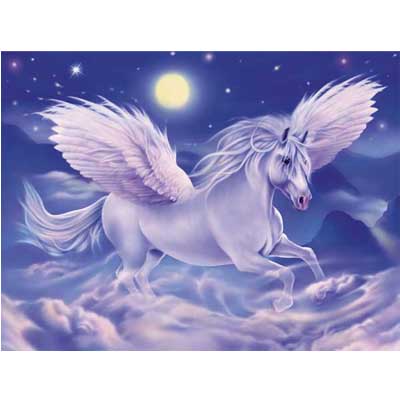
Constellations
The International Astronomical Union recognizes 88 constellations covering the entire northern and southern sky. Here is a selection of the most familiar and easily seen constellations in the northern sky.
How did the constellations get their names? Most constellation names are Latin in origin, dating from the Roman empire, but their meanings often originated in the distant past of human civilization. Scorpius, for instance, was given its name from the Latin word for scorpion, but ancient Egyptian hieroglyphs from before 3000 B.C. refer to the star group as "Ip," the scorpion king. Orion, the hunter, bears a Greek name, but had been seen as a hunter-hero figure since the times of ancient Babylon.
|
|||||||||||||||||||||||||||||||||||||||||||||||||||||||||||||||||||||||||||||||||||||||||||||||||||||||||||||||||||||||||||||||||||||||||||||||||||||||||||||||||||||||||||||||||||||||||||||||||||||||||||||||||||||||||||||||||||||||||||||||||||||||||||||||||||||||||||||||||||||||||||||||||||||
Space Mythology
|
|||||||||||||||||||||||||||||||||||||||||||||||||||||||||||||||||||||||||||||||||||||||||||||||||||||||||||||||||||||||||||||||||||||||||||||||||||||||||||||||||||||||||||||||||||||||||||||||||||||||||||||||||||||||||||||||||||||||||||||||||||||||||||||||||||||||||||||||||||||||||||||||||||||
|
Cassiopeia was the wife of King Cepheus. She was very pretty, and would often brag that she and her daughter were more beautiful than the sea nymphs, the Nereids. They complained to Poseidon, who sent a monster to Cepheus' land. In order to save their country, the king and queen sacrificed their daughter, Andromeda. Just before the monster, named Cetus, ate the princess, Perseus saved her. All five figures are represented in the sky as constellations. Cassiopeia has a very distinct shape. She looks like a "W" or "M" in the sky, depending on where she is. Some legends say that Cassiopeia was chained into the sky and sometimes hangs upside-down to remind others not to be so boastful. |
||||||||||||||||||||||||||||||||||||||||||||||||||||||||||||||||||||||||||||||||||||||||||||||||||||||||||||||||||||||||||||||||||||||||||||||||||||||||||||||||||||||||||||||||||||||||||||||||||||||||||||||||||||||||||||||||||||||||||||||||||||||||||||||||||||||||||||||||||||||||||||||||||||
|
Draco the dragon is a circumpolar (околополярное) constellation, which means it revolves around the North pole. It can be seen all year round. Draco is only present in the Northern Hemisphere, so those living in the Southern Hemisphere will never see this long constellation. The easiest way to spot Draco is by finding his head. It consists of four stars in a trapezoid, burning brightly just north of Hercules. From there, the tail slithers through the sky, ending between the Big and Little Dippers. The end of the constellation is held by Thuban, which was the pole star over 4,000 years ago. Several galaxies and even one nebula (туманность) is found within the constellation. The Cat's Eye Nebula is a favorite among astronomers. Many myths revolve around this chaotic dragon. It is said in Greek myth that a serpent named Ladon guarded the golden apple tree. One of the Twelve Labors of Heracles was to steal apples from this well-guarded tree. |
||||||||||||||||||||||||||||||||||||||||||||||||||||||||||||||||||||||||||||||||||||||||||||||||||||||||||||||||||||||||||||||||||||||||||||||||||||||||||||||||||||||||||||||||||||||||||||||||||||||||||||||||||||||||||||||||||||||||||||||||||||||||||||||||||||||||||||||||||||||||||||||||||||
|
Ursa Major is probably the most famous constellation, with the exception of Orion. Also known as the Great Bear, it has a companion called Ursa Minor, or Little Bear. The body and tail of the bear make up what is known as the Big Dipper. Also called names such as the Plough, the Wain and even the Wagon, this constellation has a lot of history behind it. Several different cultures saw a big bear in the sky. The ancient Greeks had a few different stories to explain how the animal ended up there. In one story, Hera discovered Zeus was having an affair with Callisto and turned her into a bear. Zeus put her in the sky along with her son, Arcas, who became the Little Bear. Ursa Major is full of unique celestial objects. Two of the stars, Dubhe and Merak, are pointer stars (путеводные звезды). If you are looking at the Big Dipper, the outer edge stars that make up the "bowl" of the dipper are the two stars, with Merak being the one on top. Connect a line between the two, and extend it north a distance about five times the distance between them. It will connect with the North Star, Polaris. |
||||||||||||||||||||||||||||||||||||||||||||||||||||||||||||||||||||||||||||||||||||||||||||||||||||||||||||||||||||||||||||||||||||||||||||||||||||||||||||||||||||||||||||||||||||||||||||||||||||||||||||||||||||||||||||||||||||||||||||||||||||||||||||||||||||||||||||||||||||||||||||||||||||
|
Ursa Minor, also called the Little Dipper, is a circumpolar constellation. This means it never sets in the northern sky. The true figure represented by the stars is the Little Bear. Its counterpart is Ursa Major, or the Great Bear. There are several mythological stories behind these famous constellations. In Greek myth, Zeus was having an affair with the lovely Callisto. When his wife, Hera, found out she changed Callisto into a bear. Zeus put the bear in the sky along with the Little Bear, which is Callisto's son, Arcas. In other myths, the constellation is not a bear at all, but is in fact a dog. Unfortunately, there aren't as many interesting objects in Ursa Minor as there are in Ursa Major. Probably the most important of all is the last star in the tail. This spot is held by the North Star, Polaris. Many think it is called the North Star because it is very bright. But actually, it is quite dim. Instead, the name comes from the fact that it doesn't move from its spot in the night sky. There aren't any nebulae or star clusters present in Ursa Minor. There is a unique circle of stars called the "engagement ring" slightly below Polaris. They can be viewed with binoculars or a telescope. An easy way to find Polaris is by using the pointer stars. Dubhe and Merak make up the right edge of the "bowl" in the Big Dipper. Connect them with a straight line and continue north. You will run right into the North Star. |
||||||||||||||||||||||||||||||||||||||||||||||||||||||||||||||||||||||||||||||||||||||||||||||||||||||||||||||||||||||||||||||||||||||||||||||||||||||||||||||||||||||||||||||||||||||||||||||||||||||||||||||||||||||||||||||||||||||||||||||||||||||||||||||||||||||||||||||||||||||||||||||||||||
|
Bootes, the herdsman, rides through the sky during the late Spring and early Summer. While he may have appeared as a shepherd to the ancients, modern star-gazers like us can easily recognize the shape of a kite, with the bright star Arcturus at the point of the kite where the tail is attached.
Arcturus is a bright red supergiant star with a diameter nearly 20 times that of the Sun and a brightness more than 100 times that of our Sun. Since it is only 36 light-years away (close for a star!), it appears as the brightest star in Bootes, and, in fact, the fourth brightest star in the sky. Bootes was identified with a farmer who plows the land during spring. The Romans called Bootes the Herdsman of the Septemtriones, that is, of the seven oxen represented by the seven stars of the Big Dipper, which was seen as the cart or the plow. |
||||||||||||||||||||||||||||||||||||||||||||||||||||||||||||||||||||||||||||||||||||||||||||||||||||||||||||||||||||||||||||||||||||||||||||||||||||||||||||||||||||||||||||||||||||||||||||||||||||||||||||||||||||||||||||||||||||||||||||||||||||||||||||||||||||||||||||||||||||||||||||||||||||
|
Cancer, the Crab, is a member of the Zodiac, a group of constellations that the Sun travels through each year. Cancer is best seen during the month of March, but is visible from December through June. Although the Crab is one of the more famous constellations, it is mostly made of dim stars. Fortunately, Cancer is surrounded by much brighter figures, like Gemini and Leo. If you use your imagination, a figure that looks like a crab appears. Looking at the picture, one can see a body with two "claws" coming out of it. The constellation itself came from Greek myth. In the story of Heracles and the Twelve Labors, the warrior had a great battle with the monster Hydra. The giant crab tried to help Hydra, but Heracles smashed it with his foot. Hera put the crab in the sky because it was so brave. |
||||||||||||||||||||||||||||||||||||||||||||||||||||||||||||||||||||||||||||||||||||||||||||||||||||||||||||||||||||||||||||||||||||||||||||||||||||||||||||||||||||||||||||||||||||||||||||||||||||||||||||||||||||||||||||||||||||||||||||||||||||||||||||||||||||||||||||||||||||||||||||||||||||
|
Hydra is the longest constellation in the sky and is also the largest in terms of area. It is so long that it takes more than six hours to rise completely. Along its northern side, we can observe the zodiacal signs of Cancer, Leo, Virgo and Libra. The stars in the serpent's head appear to be at the same distance but they are really very far away from each other. The northernmost of the six stars in the head of the serpent, Epsilon Hydrae, is a quintuple star - a system of five stars. Alphard (Arabic for "the solitary one") is Hydra's brightest star. In Greek mythology, Heracles slew Hydra, a horrible serpent with many heads that grew back as soon as they were cut off. Killing the Hydra was one of Heracles’ twelve labors, during which he also defeated Leo, the lion, and Draco, the dragon. |
||||||||||||||||||||||||||||||||||||||||||||||||||||||||||||||||||||||||||||||||||||||||||||||||||||||||||||||||||||||||||||||||||||||||||||||||||||||||||||||||||||||||||||||||||||||||||||||||||||||||||||||||||||||||||||||||||||||||||||||||||||||||||||||||||||||||||||||||||||||||||||||||||||
|
The constellation Leo is known as the Lion. Leo's head and mane make up an upside-down question mark called the Sickle. One of the brightest spring stars, Regulus (Latin for "little king"), is at the base of the question mark. The rest of Leo's body, legs, and tail extend to the east. During the dry season in ancient Egypt, the lions of the desert came close to the valley of the Nile when the river flooded, which used to happen when the Sun was in Leo. Some have interpreted this as the origin of the name of the constellation. The ancient Sumerians, Babylonians, Persians, Syrians, Greeks, and Romans, all recognized this constellation as a lion. |
||||||||||||||||||||||||||||||||||||||||||||||||||||||||||||||||||||||||||||||||||||||||||||||||||||||||||||||||||||||||||||||||||||||||||||||||||||||||||||||||||||||||||||||||||||||||||||||||||||||||||||||||||||||||||||||||||||||||||||||||||||||||||||||||||||||||||||||||||||||||||||||||||||
|
The constellation Virgo is known as The Maiden. The constellation represents almost every famous and powerful female in mythology, including Athena, Artemis, Persephone and Demeter. She is usually carrying a grain of wheat and a staff. The brightest star in the constellation is Spica (звезда Колос), which happens to be the grain of wheat. Its name is Latin for "ear of wheat".
|
||||||||||||||||||||||||||||||||||||||||||||||||||||||||||||||||||||||||||||||||||||||||||||||||||||||||||||||||||||||||||||||||||||||||||||||||||||||||||||||||||||||||||||||||||||||||||||||||||||||||||||||||||||||||||||||||||||||||||||||||||||||||||||||||||||||||||||||||||||||||||||||||||||
|
Aquila
To the ancient Greeks, Aquila was the servant of Zeus who held the god's thunderbolts and performed errands for him. He may also be the great eagle who devours Prometheus' liver as punishment for giving fire to humans. The line of three stars which includes Altair is revered by Indians as the footprints of the god Vishnu. Some Asian traditions see the bright star Vega as the Weaving-Princess star who marries a shephard, the star Altair. |
||||||||||||||||||||||||||||||||||||||||||||||||||||||||||||||||||||||||||||||||||||||||||||||||||||||||||||||||||||||||||||||||||||||||||||||||||||||||||||||||||||||||||||||||||||||||||||||||||||||||||||||||||||||||||||||||||||||||||||||||||||||||||||||||||||||||||||||||||||||||||||||||||||

